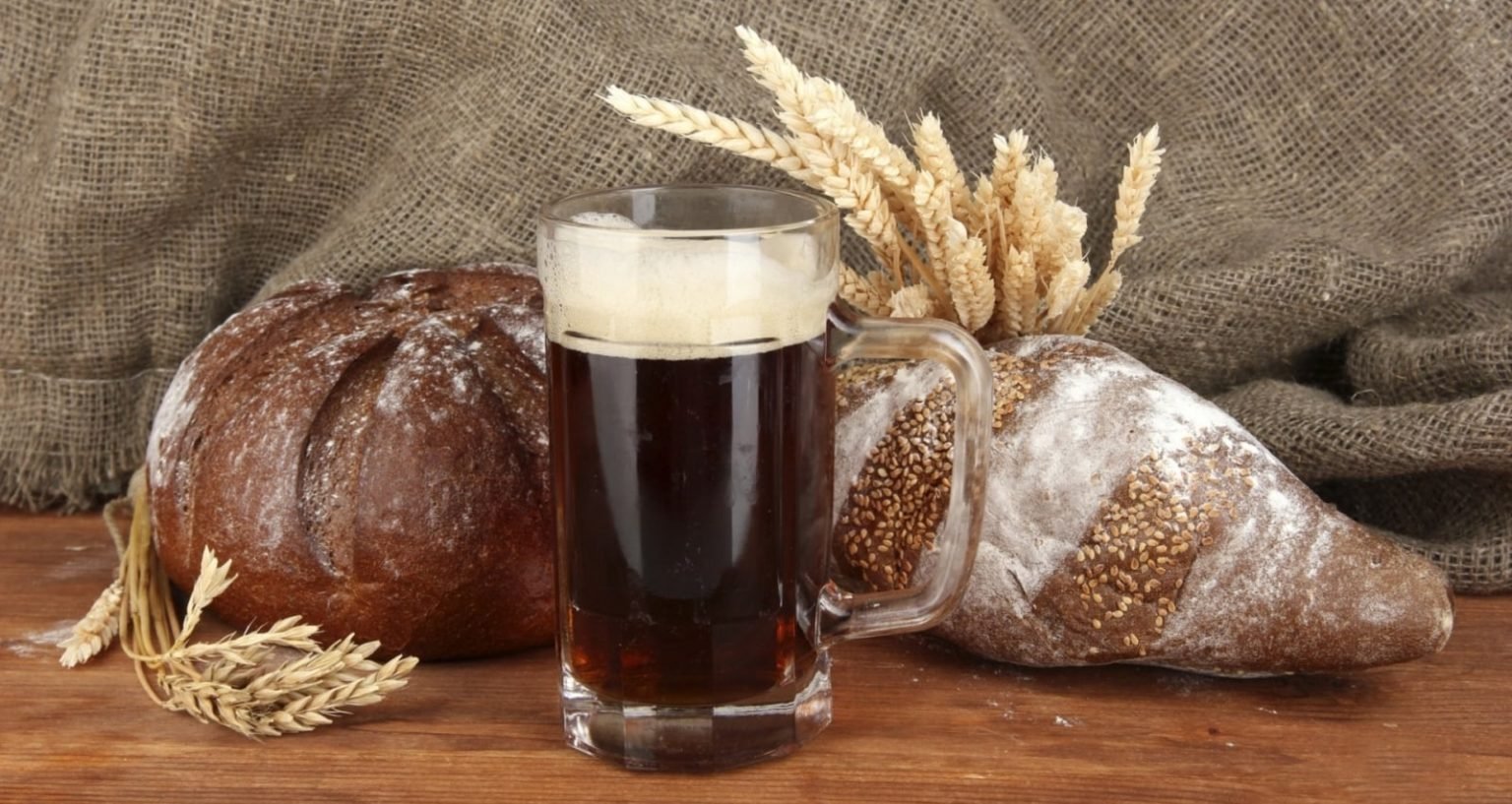Contrary to popular beliefs and stereotypes related to the country Russia, the Russian Kvass has a greater presence in the scenes of the daily life of the population, while the fame of Vodka is reduced to a few parties or celebrations.
Not only Russians consider kvass “theirs”, there are so many varieties of this drink from different countries.
Belarusians are proud of kvass made from “Lida kvass” bread, Ukrainians call it Brovary beer, Poles add beets to it, Latvians lemon, Komi-Permyaks oatmeal, and Siberians horseradish.
But what is the history of this drink so loved in Russia?
In this article we will tell you all the details related to kvass, how long this drink existed, what beliefs and rituals are associated with it, and how to prepare your own kvass at home.
The origin of Russian kvass
The word kvass itself is of Russian origin and means sour drink. Although the ancient Egyptians were able to prepare such a drink from barley grains. Fruit kvass were known in Babylon, but for some reason they were not successful there.
Apparently the Assyrians, Medes or Persians did not like it. However, Herodotus and Pliny the Elder left a description of drinks that are very similar in composition to kvass.
Hippocrates separately highlighted its healing power, and he was absolutely right: centuries later, the beneficial effect of kvass on digestion processes has been scientifically proven.
Kvass increases appetite, has a high energy value, quenches thirst, invigorates and refreshes. Kvass helps to keep long fasts and not lose physical strength.
In 1913, Dr. V.S. Sotnikov confirmed the death of typhoid and paratyphoid microorganisms in kvass.
The first mention of domestic kvass dates back to 989, when Prince Vladimir, regarding the conversion of his subjects to Christianity, ordered:
“distribute food, honey and kvass to the people.“
The popularity of kvass in Russia is evidenced by the words of doctor Leonid Simonov (1898):
“The making of kvass is common among us in the same way as the baking of bread: it is made in the houses of peasants, petty bourgeois, merchants and lords, in monasteries and military barracks, hospitals and sanatoriums; in the cities there are kvass breweries and manufacturers who prepare kvass for sale. Our doctors believe that Kvass is a cleansing and healthy drink not only for the healthy, but also for the sick. Recently, doctors are beginning to pay attention to Russian kvass and recommend it in Western Europe.“
Beyond simple drink, even the devils bathe in Kvass
On the one hand, Kvass was an ordinary and everyday drink, it was drunk both on fasting days and on normal days, before, during and after work. On the other hand, various beliefs and rituals have always been associated with kvass.
The drink appears in many popular rituals., it was prepared for wakes, weddings or for the birth of a child.
Curious traditions related to Kvass
- In Polissya, in Radunitsa, kvass was used on the graves of loved ones.
- In the Smolensk region, on the fortieth day after death, kvass was necessarily brewed, it was believed that it facilitated the soul’s transition to another world.
- On the first day of the wedding, even before the wedding, the bride and groom poured kvass from one bucket to another. Then the friend, holding the young couple by the hands, circled the kvass three times around it and sat them on the table. This was believed to contribute to fertility in the house.
- On the eve of the wedding, Belarusians washed the bride in a bathhouse and always poured kvass with hops over the stove to enhance the beauty and feminine attractiveness of the bride.
- After the wedding, the parents of the groom greeted the young couple with bread and kvass.
- In Russia, they believed that a fire caused by lightning could only be extinguished with milk or kvass, but not with water. And so that the fire did not spread further, a ring from a bowl of kvass was thrown into the flame.
- The Mordovs, before the first bath, poured a little kvass into the mouth of a newborn so that he would catch a cold.
- In Siberia, in order to have more cream in the milk, the pot was washed with sour kvass and salt and burned in the oven.
- In the Kupyansky district of the Kharkov province, they believed that after easter, the mermaids came out of the water and, after appearing in the houses, bathed in boiled kvass on Thursday.
- While in the Oboyan district of the same province, kvass was not made on Monday, to prevent the devil from redeeming his children.
Recipes to taste: Darin, Melanin, Varvarin
Each family had its own drink recipe, hence the names Darin kvass, Malanyin kvass, Varvarin kvass. The recipe for dry kvass was especially popular in the Moscow merchant club in Dmitrovka, white kvass in the Penza province, and red kvass in the Tambov province.
In the last quarter of the XIX century. Russians especially liked fruit kvass: fresh apples, blueberries, pears, lingonberries, raspberries, plums, raisins, blackberries.
Not only pure juices, but also crushed fruits and berries were fermented for them in a special way. The fermenter profession was one of the most common in Russia. Each one of them specialized in the elaboration of a certain type of drink. They were called so: “barley fermenters”, “apple”, “pear”. They worked in a strictly designated area of the city, which was forbidden to go beyond, so as not to create unnecessary competition.
The kvassniks carried with them a glass container and on their heads something resembling a cylinder. Confidence that kvass had miraculous properties made it possible not to worry too much about hygiene, so everyone drank from the same glass.
Okroshka salad with Russian Kvass
Few people know that okroshka salad was invented by Volga barge carriers. For lunch, they were given dry Vobla (dried fish) and kvass; to soften the fish, they soaked it in a bread drink (the Kvass). Later, vegetables were added to the recipe for added satiety. Today, fish okroshka is not as popular as meat okroshka, but kvass remains an invariable component of both.
At the beginning of the 19th century, there were more than 500 varieties of popular drinks with many flavors. kvass from boiled pears was especially the favorite among Muscovites.
The recipe for kvass, which was prepared by the ancient Russians, was not harmless: the alcohol content could reach 15%.
Typical scenes related to Russian Kvass
A Russian kvass barrel, surrounded by people with cans and glasses, was a familiar feature of the summer cityscape.
Respectable men used the drink with pleasure, and respected housewives too.
But at the beginning of the 90s of the 20th century, kvass began to give way to drinks imported from the West, which in Soviet times was something difficult to imagine. In addition, the sale of Kvass in unhealthy barrels has also generated a negative perception of the drink.
But today Kvas is going back to its positions! And the Russians began to cook it at home again.
Let’s prepare white, refreshing and rejuvenating kvass!
Will need:
- 300 g of rye flour
- 3 liters of boiling water
- 100 g of sugar or honey
- A glass of rye crackers
- handful of raisins
- Horseradish, mint or currant leaves
Dilute rye flour with boiling water, mix well. Add raisins and crackers to the cooled but still warm mixture, close the pot tightly and place in a warm place for a day or two. As soon as abundant foam has formed on the surface, the kvass is ready! Strain, bottle and put in the fridge.
Enjoy Russian Kvass with us
During our tours in Moscow, St. Petersburg and other cities, we always look for the opportunity to try typical Russian food and drinks.
If you have plans to travel to Russia, do not hesitate to contact us and we will help you to perfectly plan each day that you are going to enjoy during your trip.



